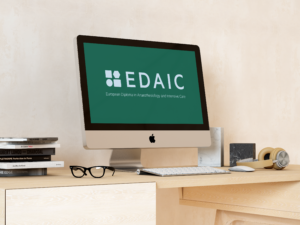Newsletter 2022
Newsletter August 2022: How to optimise the execution of emergency procedures?
Result of an interdisciplinary study supported by European Scientific Societies
Prof. Jean-Michel Constantin, Virginie Delplanque, Xavier Delplanque

This international study aimed to answer the following question: How to facilitate the execution of emergency procedures in healthcare?
At stake: Increasing the quality of patient care worldwide.
Over 180 respondents in 20 countries enabled to identify two key opportunities: “Making teamwork simpler and more efficient” and “Increasing the frequency and quality of ongoing education”.
Let’s go back to the approach, the results and the solutions in mind.
An initiative started in the midst of the covid crisis

From aeronautics to health: 50 years of Crisis Resource Management

Today, 9 months later and thanks to the active support of ESAIC, SFAR, SFMU, the research team publishes its report.
The two key opportunities on an international scale: making teamwork simpler and more efficient and increasing the frequency and quality of ongoing education
Following individual interviews with 40 international caregivers and the participation of 181 healthcare professionals at the online survey, two closely related opportunities emerge: “Making teamwork simpler and more effective” appears to be the priority and common issue on an international scale. The key to success is based on good coordination, and in particular speed of execution between the various practitioners involved in the emergency procedure. This coordination is itself conditioned by frequent and quality continuous training, fully integrating simulation (training and rehearsal on a mannequin before executing on a patient).
At an international level, native practitioners from Latin countries and AMEA (Africa – Middle East – Asia) mention a crucial need to increase the frequency and quality of continuing education, even more so than Anglo-Saxons.
Challenge: How to ensure the same quality of care everywhere and anytime in Europe thanks to an evolution of ongoing training?
The above question is key. We all know that the Anaesthesia, Intensive Care and Emergency departments must ensure continuous care, 24/7, with patients who sometimes have a life-threatening condition.
We all know that to do so, these departments have a high and frequent turnover of team members due to on-call duty, sick leaves, burn out or even resignations…
Physicians, nurses, paramedics in these services must be able to work effectively together, sometimes without knowing each other and sometimes during long shifts. The keystone of efficient coordination is regular and qualitative ongoing training in order to optimise the quality of care.
An innovative training concept, integrated into a co-constructed digital tool and being tested this summer in France
In response to this problem, the initiating team of the study is co-developing an innovative solution offering a training triptych of individual and collective modules within a mobile and web application. The results of the tests of this prototype, carried out during the summer in France with French and international trainers and learners, in partnership with the SFAR and the SFMU, will be made public in the autumn. More details about the ESAIC role in this project will come later on.
In the meantime, we invite you to read the international report, that you can download for free on this Website.
[maxbutton id=”1″ url=”https://www.esaic.org/newsletter/” text=”Read the Newsletter” ]











